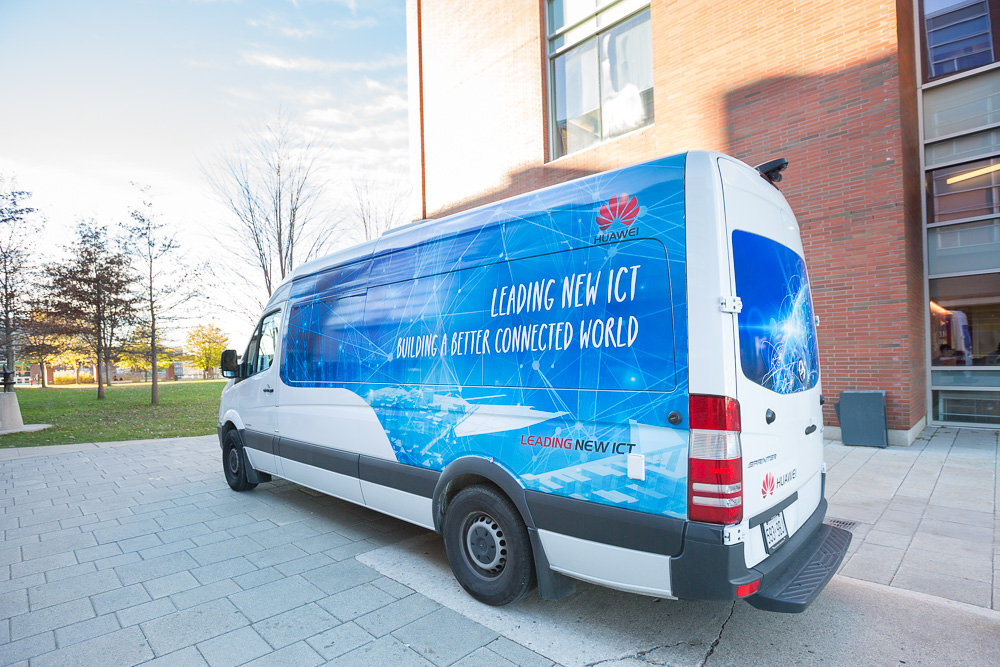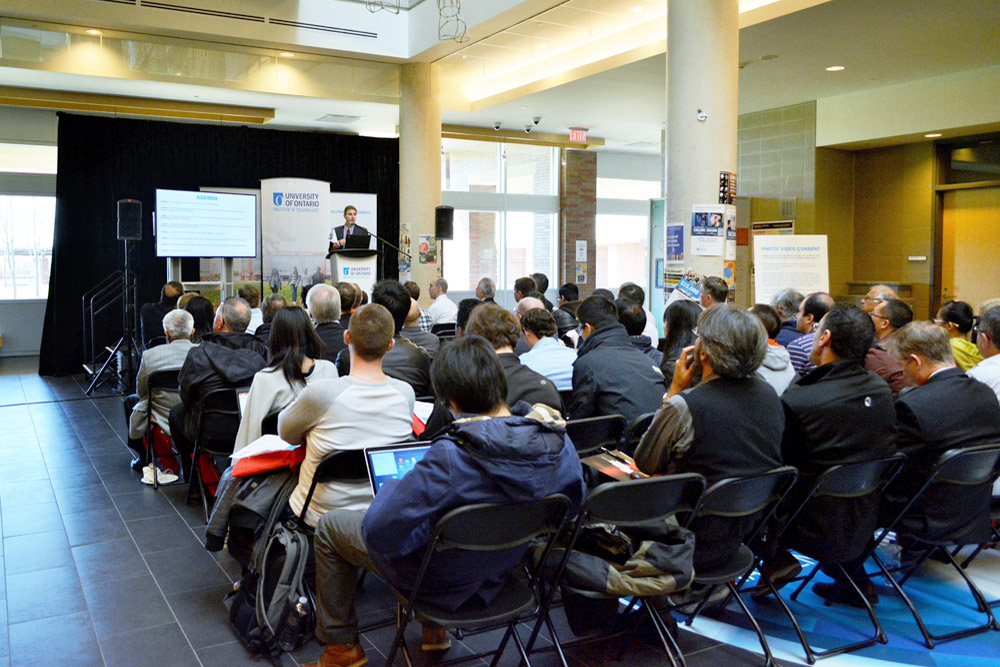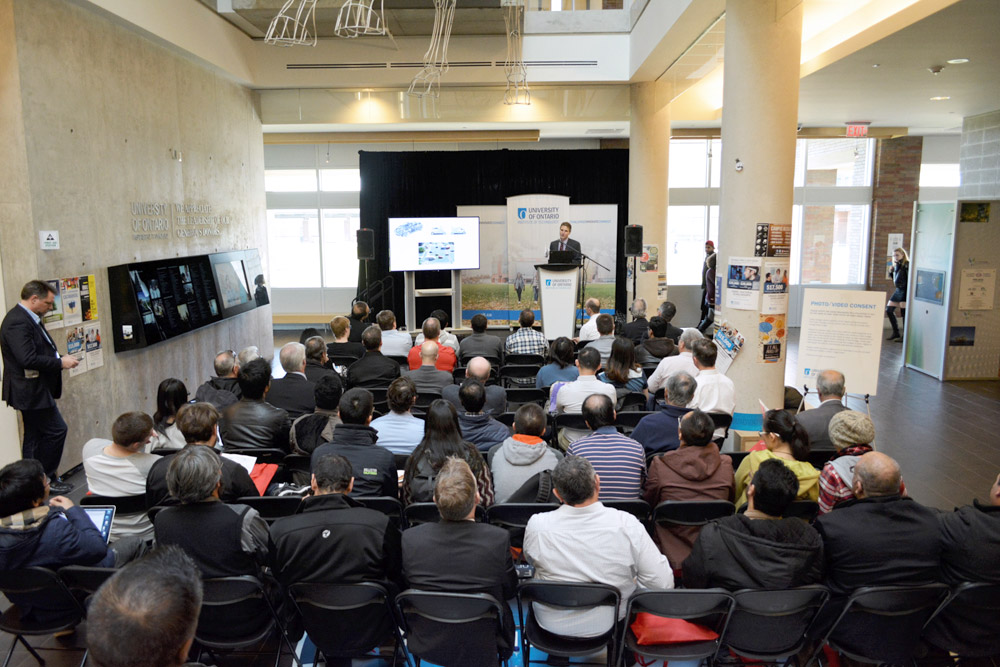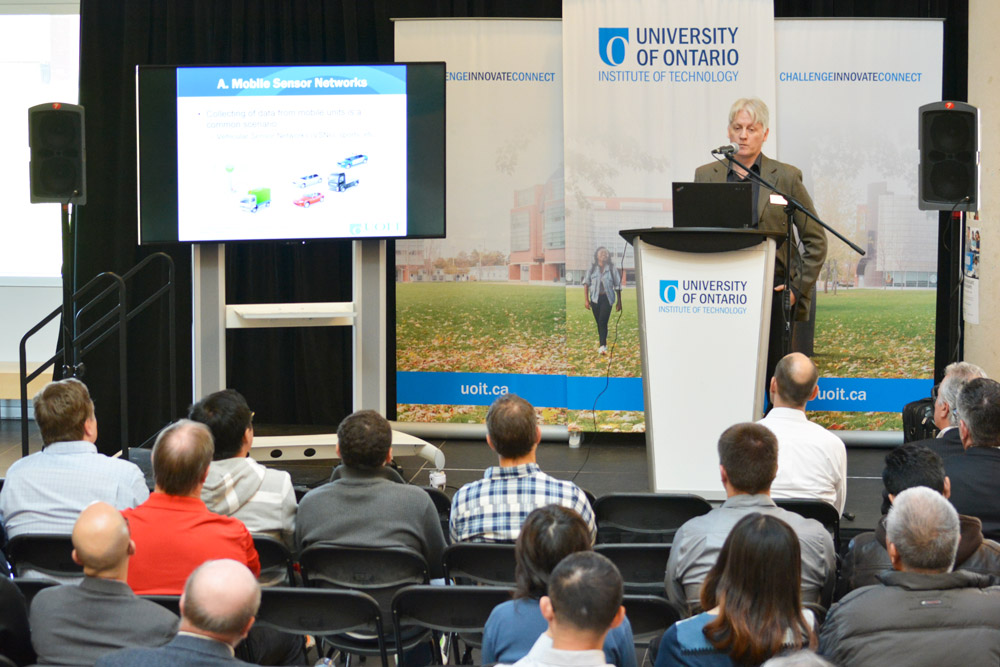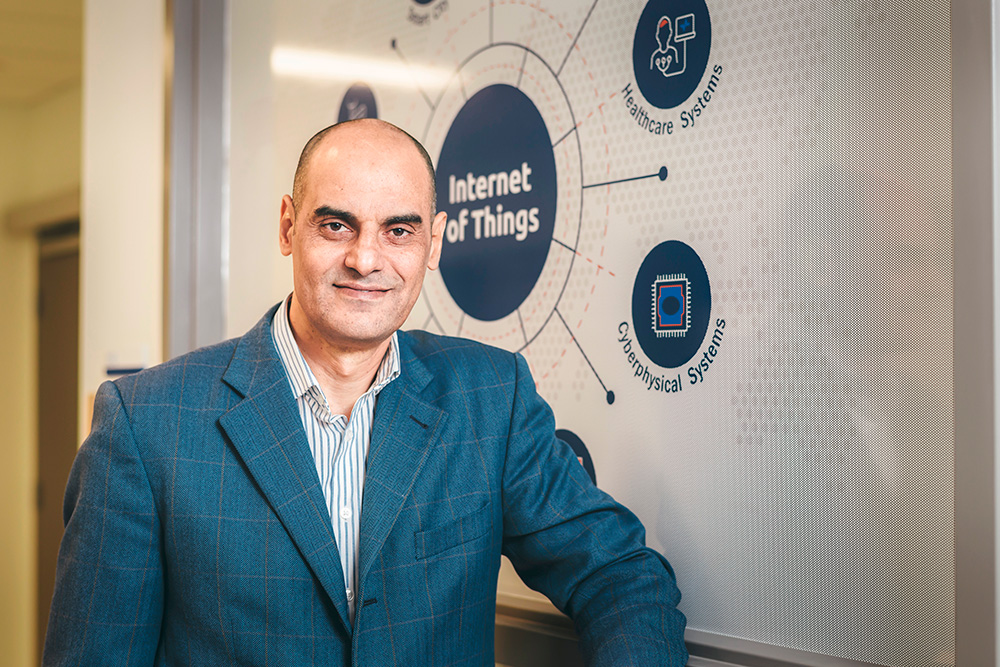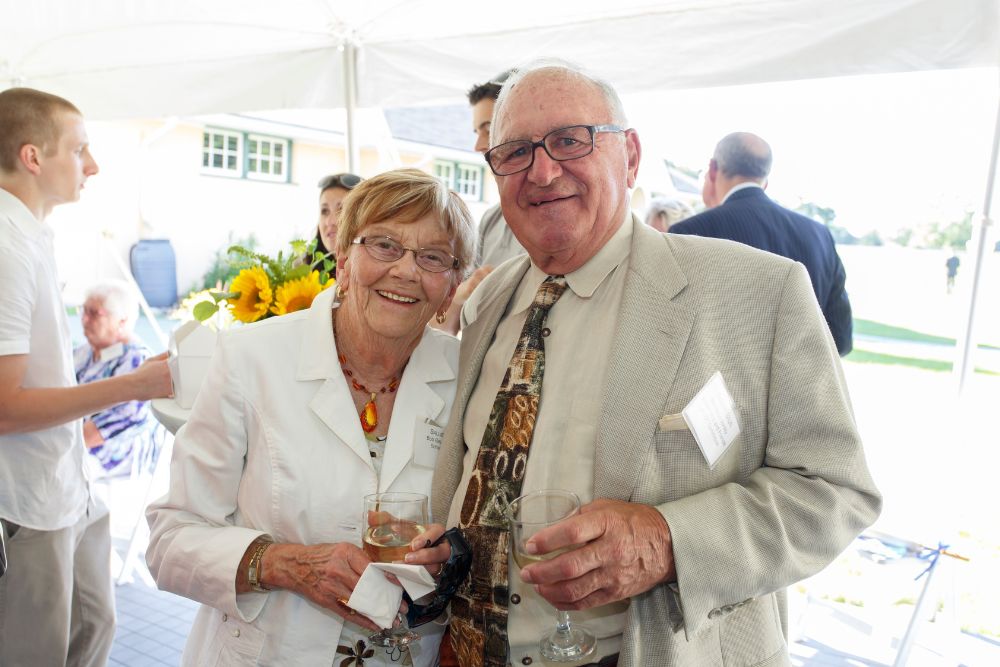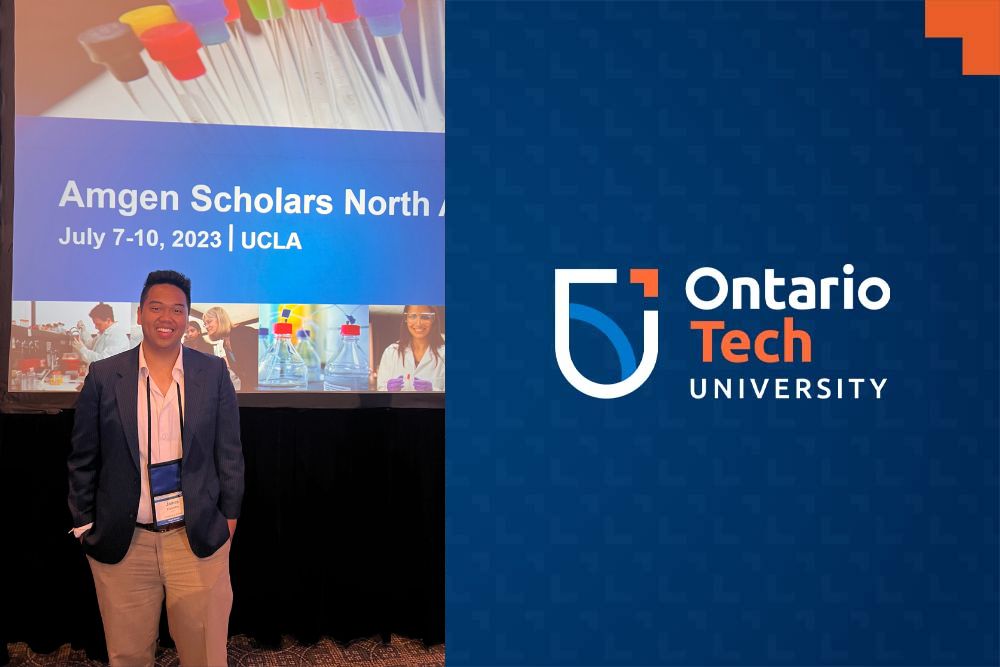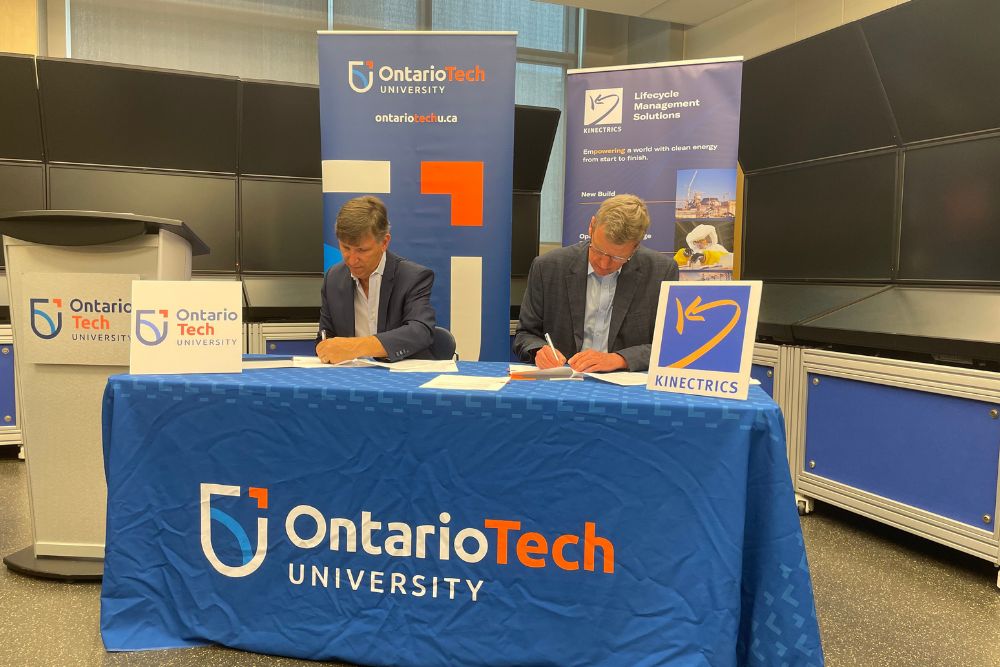The word on how modern vehicles are talking to each other
University poised to be a key connector for the vehicle-to-vehicle communications industry
December 7, 2016
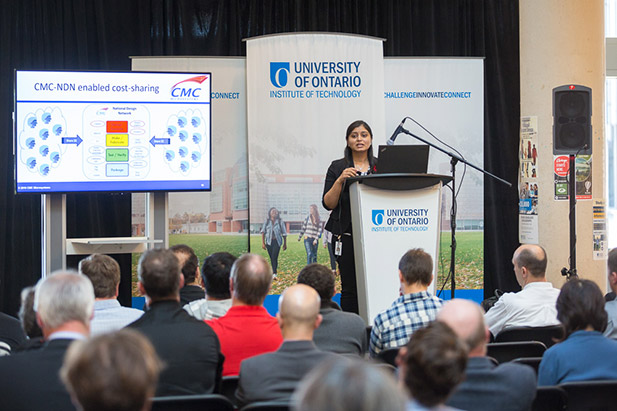
Driverless vehicles are imminent and will lead to profound changes to the transportation industry. They also have the potential to provide viable solutions to improve road safety and traffic congestion, and reduce the high costs associated with traffic accidents and transportation infrastructure. The technology required to make driverless vehicles a reality is extensive and will require collaboration between industry, government and academic institutions.
Exploring how cars, buses and trucks can communicate with each other on the road, while they are being operated will move driverless vehicle technology— specifically, Vehicle-to-Vehicle (V2V) and Vehicle-to-Infrastructure (V2I) communications—one step forward. V2V technology could alert a motorist to a vehicle making a right turn ahead in traffic, allowing the driver to react and potentially avoid a collision. V2I technology devices could provide early alert to a truck driver about a dangerously sharp curve ahead on the road.
The applications for communication between cars and devices such as traffic lights are seemingly limitless, and industry enthusiasm is strong. Capturing the energy of the moment, the University of Ontario Institute of Technology (UOIT) recently brought together key stakeholders for a Communications Seminar and Networking Event sponsored by industry representatives, CMC Microsystems, Gap Wireless, Keysight Canada and Huawei Technologies.
Sponsors displayed their latest work from a technology demonstration room, including Huawei Technologies, which parked a demonstration van near the venue.
Topics and presenters:
- Co-operative communications – A wireless approach (Dr. Shahram ShahbazPanahi, Department of Electrical, Computer and Software Engineering, UOIT Faculty of Engineering and Applied Science (FEAS))
- Seamless information networking – A software approach (Dr. Ramiro Liscano, Department of Electrical, Computer and Software Engineering, UOIT FEAS)
- Vehicular communications: Paradigm shifts, R&D infrastructure issues, and CMC solutions (Dr. Gayathri Singh and James Dietrich, CMC Microsystems)
- UAV communications to V2V and V2I (Glenn Poulos, Gap Wireless)
- Testing today’s communication systems for V2V and V2I (Peter Schweiger, Keysight Canada)
- Setting up the infrastructure to handle today’s complex data systems (Craig Snow, Huawei Technologies)
Attendees also included representatives from government and other post-secondary institutions, as well as a considerable number of university faculty, staff and students.
Quote
“V2V/V2I is a growing part of the Internet of Things, requiring ‘system of systems’ thinking to fully realize its promise of enhanced road safety, traffic management and passenger experience. Our university is poised to lead advanced vehicular technology development through its multi-disciplinary expertise in automotive systems, wireless communications and real-time computing.”
-Dr. Langis Roy, Dean, Graduate Studies, University of Ontario Institute of Technology
